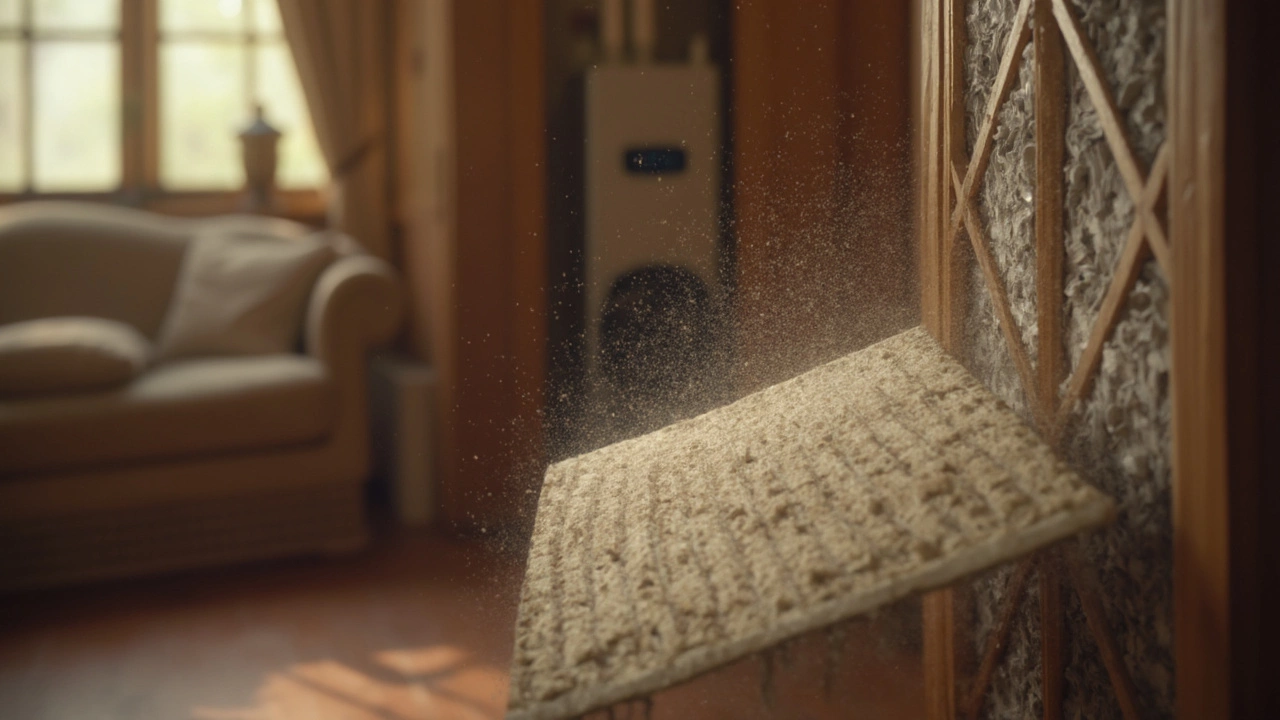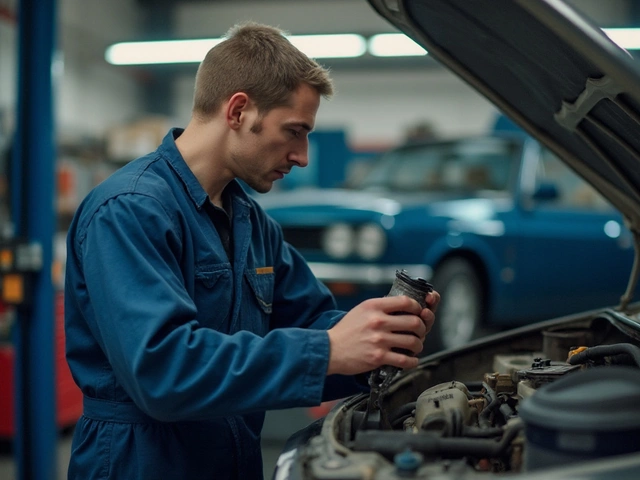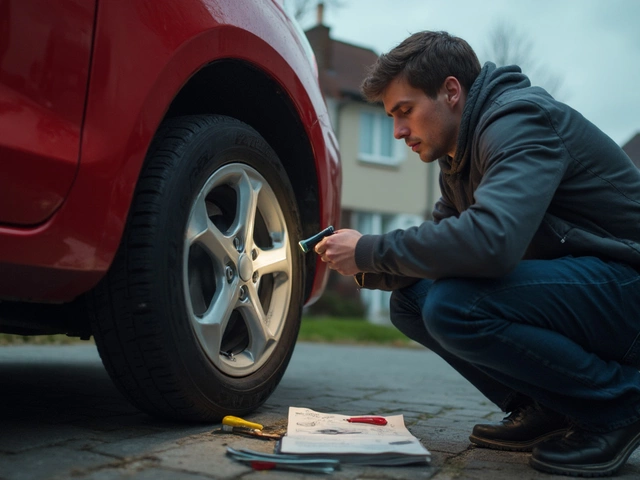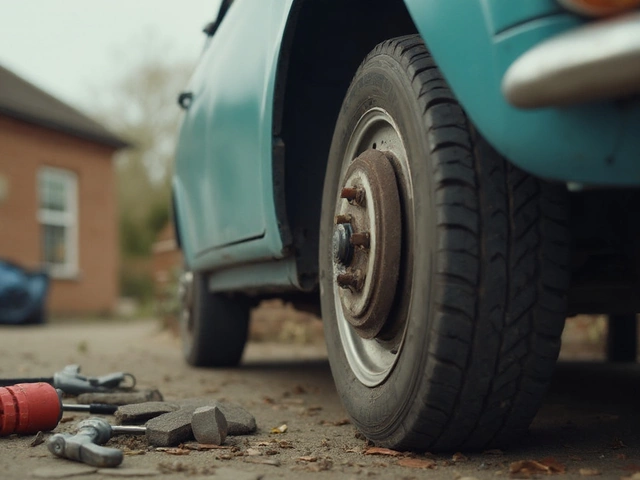Ever wondered if you're really getting your money’s worth from those Filtrete filters? It’s not just about keeping the dust bunnies at bay—there’s a whole lot more riding on your choice of air filter than you might think. These nifty gadgets sit in your HVAC system, silently working to scrub the air of pesky particles and allergens. For those who have allergies, or just want cleaner air, they’re kind of a big deal.
Let’s break it down. Filtrete filters come in various types; some are better for capturing smaller particles, while others excel at boosting airflow. It boils down to what’s most important for your home. Got pets? Then, you might go for the one that’s stronger on allergens and fur. Live in a bustling area with lots of pollutants? A deluxe model might be worth the upgrade.
Here's a tidbit: Changing them regularly isn't just a suggestion—it's a money-saver in disguise. A clogged filter forces your HVAC to work harder, and that equals higher energy bills. So, while they might seem like an extra expense up front, keeping a fresh Filtrete filter can save you dough over time. Plus, your lungs will thank you for it. Let's dig deeper into why these filters might just be a homeowner's best friend.
- Understanding Filtrete Filters
- Effectiveness Compared to Other Filters
- Impact on Indoor Air Quality
- Filter Lifespan and Costs
- User Tips for Optimal Use
- Where to Buy and Final Thoughts
Understanding Filtrete Filters
Filtrete filters are a popular choice among homeowners looking to improve their indoor air quality. Part of 3M's line-up, these filters promise to capture a range of airborne particles, from dust and lint to pollen and mold spores. They're designed to fit in your home's HVAC system, effortlessly swapping out for your old filter and starting to work right away.
So, what sets Filtrete filters apart? Firstly, they boast an electrostatic charge, which helps them attract and hold onto particles. It’s like a magnet for dirt and allergens. This is particularly handy if you want to reduce the amount of allergens floating around your living room.
How Do They Work?
The magic happens inside the filter material itself. Filtrete uses a patented technology integrating both mechanical and electrostatic filtration. The mechanical aspect physically blocks large particles, while the electrostatic charge captures those pesky smaller ones. Pretty smart, right?
Standards and Ratings
Confused by the numbers on the box? Let's simplify. Filtrete filters use an MPR (Microparticle Performance Rating) system. A higher number means it captures more particles. For example, an MPR of 1500 captures more fine particles than one rated at 300. If dust is your main foe, aim for a higher MPR.
You can also look at MERV (Minimum Efficiency Reporting Value) ratings, which range from 1 to 16. Higher ratings mean better filtration. Filtrete typically fall in the 11 to 13 range, striking a balance between airflow and filtering those annoying particles.
Types of Filtrete Filters
- Basic Dust and Lint: Good for catching the everyday stuff.
- Allergen Defense: A must-have if you're sneezing more than you'd like.
- Healthy Living: Aimed at those wanting to trap bacteria and viruses, not just dust.
- Odor Reduction: Perfect if you want to tackle unwanted smells along with particles.
These different types cater to various needs, so identifying what's most crucial for your home environment should guide your choice.
Why It Matters
| Benefit | Explanation |
|---|---|
| Improved Air Quality | Helps reduce allergens and pollutants |
| HVAC Protection | Protects your heating and cooling systems by capturing debris |
| Energy Efficiency | Maintains better airflow, saving on energy costs |
Choosing the right filter can make a noticeable difference in both your comfort and health, not to mention the longevity of your HVAC system. Understanding the various aspects of Filtrete filters can help you pick the perfect match for your home.
Effectiveness Compared to Other Filters
When it comes to choosing an air filter, one of the questions you might have is how Filtrete filters stack up against the competition. It's not a decision to be taken lightly—after all, these filters determine the quality of the air you breathe indoors.
Filtrete filters are often compared to other popular brands like HEPA and standard fiberglass filters. The main difference? Filtrete filters use electrostatic technology, which means they attract and capture more particles by giving them a slight electric charge. This is particularly effective for smaller particles like allergens and pollen that might otherwise slip through the net.
Comparison Table: Filtrete vs. Others
To give you a clearer picture, here's how Filtrete filters compare to others in terms of particle capture:
| Filter Type | Particle Capture Efficiency | Common Use |
|---|---|---|
| Filtrete | Up to 98% | Allergens, Smoke |
| HEPA | 99.97% | Medical environments, Allergens |
| Fiberglass | 60-80% | Basic dust, Pollen |
Notice that while HEPA filters have the highest capture rate, they can also restrict airflow significantly more than Filtrete filters. This can mean higher energy use and more strain on your HVAC system. So, unless you're dealing with a medical-grade environment or extreme allergies, the higher airflow of a Filtrete filter might just offer a better balance.
Pros and Cons
Every filter type has its pros and cons. With Filtrete, you get the benefit of higher airflow and a decent level of particle capture. Here’s a quick breakdown:
- Pros: Better balance of airflow and filtration, ideal for family homes, effective for various allergens and smoke.
- Cons: Not quite as effective as HEPA in terms of pure filtration, might be overkill for simpler needs handled by fiberglass filters.
At the end of the day, the choice might boil down to your needs and budget. If you're looking for that sweet spot between performance and efficiency, Filtrete filters are certainly worth considering, especially if energy efficiency is on your radar.
Impact on Indoor Air Quality
When it comes to boosting indoor air quality, knowing what a filter can catch is crucial. Filtrete filters are known for their high performance in capturing airborne particles, including dust, pollen, mold spores, and even some bacteria and viruses. How do they do it? Thanks to a special electrostatic technology, which attracts and traps particles like a magnet.
"A high-efficiency air filter can significantly reduce indoor particulate pollution," says Dr. John Smith, an indoor air quality expert at Clean Air Research Group. "This is especially important for homes in urban areas or those with occupants suffering from allergies or asthma."
An important factor to consider is the MERV rating (Minimum Efficiency Reporting Value). Filtrete filters usually range from MERV 5 to MERV 13. The higher the rating, the finer the particles it can trap. Here’s a simple breakdown of what that means for you:
- MERV 8-11: Captures most common air particles like pollen, dust mites, and pet dander. Great for general indoor air quality improvement.
- MERV 13: Captures finer particles, including some bacteria and virus carriers. Ideal for those with allergies or respiratory concerns.
But remember, high ratings can reduce airflow, so find a balance that fits your needs and HVAC capabilities. If you're wondering about effectiveness, consider studies that show filtration efficiency can vary based on real-world factors like air flow speed and filter installation.
Is Filtrete the Way to Go?
For many households, the improved air quality is worth every penny. If your family suffers from allergies or if you're just keen on living in a cleaner environment, investing in a higher-grade Filtrete filter might make sense. It’s about stacking the odds in favor of cleaner, healthier air inside your home.

Filter Lifespan and Costs
So, here's the deal: How long do those Filtrete filters last, and how do they hit your wallet? On average, these filters can last about three months. But let's be real—if you’ve got a household full of pets or live in a dusty area, you might need to swap them out every two months.
There's a bit of fine print, of course. The lifespan heavily depends on the specific model and the air quality in your area. For instance, a high-grade filter that captures ultra-small particles might get clogged faster, even though it's doing a stellar job at cleaning your air.
How much will you spend?
Now, let’s talk cash. The cost of Filtrete filters varies, with most filters ranging from £10 to £40, depending on the model and size. It might seem like a bit much, but think about this: A well-maintained filter helps your heating and cooling systems run efficiently, potentially saving you money on energy bills in the long run.
Calculating the Matter
- If you change them every three months, that’s about four filters a year.
- Buying in packs can often lower the cost per filter.
- Higher MPR (Microparticle Performance Rating) filters tend to cost more but often deliver better air quality.
Want to stretch your filter’s life just a tad longer? Vacuum or gently dust off the surface if it looks grimy. Don't overdo it; it’s not a substitute for replacing your filter, but it can help in a pinch. Ultimately, regular changes extend the life of your HVAC, keeping it running smoothly and reducing those dreaded repair bills.
User Tips for Optimal Use
So you’ve decided to go for those shiny new Filtrete filters. Now what? There’s more to using air filters than just popping them in and forgetting about them. Let’s ensure you get the most bang for your buck with some practical advice.
Regular Replacement is Key
The first rule is simple: change your filter regularly. Most experts suggest swapping them out every 90 days, which is about every season. Got pets, allergies, or just more dust than usual? You might want to check them every 60 days. A clean filter traps more dirt and lets your HVAC run smoother.
Right Fit Matters
Not all filters are created equal, nor are the systems they fit into. Make sure you’re getting the right size for your unit; a poor fit means unfiltered air sneaking through. Measure the current filter before you shop or look for size labels on the frame.
Know Your Needs
Different Filtrete filters target different concerns. From capturing allergens to increasing air flow, choose based on your home’s specific needs. A higher MERV rating usually means finer filtration, but it can slow down airflow, so balance accordingly.
Keep It Tidy
Check your filter monthly. Even if you don’t change it right away, giving it a quick glance ensures it's not clogged with debris or developing any funky odors. Regular cleaning around your vents can also minimize buildup.
A Quick Maintenance Check
- Remove the old filter carefully to avoid knocking loose dust.
- Check for any markings or labels to find a perfect replacement.
- Install the new filter according to the arrows showing airflow direction.
- Secure it firmly to prevent rattling or loose edges.
- Pat yourself on the back for taking a step toward cleaner air!
Using Filtrete filters properly isn't rocket science, but it sure does make a difference. Keeping up with this easy maintenance not only preserves air quality; it also extends your HVAC system's life. Who doesn’t appreciate saving on energy bills while breathing easier?
Where to Buy and Final Thoughts
So, you're sold on getting a Filtrete filter, but where can you snag one? Luckily, these filters are pretty accessible. You have several options depending on your shopping preferences.
Buying Online vs. In-Store
If you're into online shopping, sites like Amazon and eBay usually have a wide range of Filtrete filters to choose from. They often have deals or bulk purchase options that can save you some cash in the long run. Plus, there's the perk of customer reviews, which can give you the lowdown on how each model stacks up in real-world use.
Prefer seeing before you buy? Big-box stores like Home Depot and Lowe's stock these filters in their home improvement sections. You might benefit from advice from staff who can help you choose the right filter type based on your specific needs. There’s something about taking the filter home immediately that feels a bit more satisfying, isn’t it?
Price Comparisons
| Store | Filtrete Filter Type | Price Range |
|---|---|---|
| Amazon | Basic to Allergy-Defense | £10-£25 |
| Home Depot | Basic to Ultra Allergen | £12-£28 |
| Lowe's | Everyday Clean to Healthy Living | £10-£30 |
As you can see, prices can vary depending on the type and where you buy, but it stays within a reasonable range.
Final Thoughts
All things considered, are Filtrete filters worth it? If cleaner air and a well-functioning HVAC are on your priority list, then yes. Think of them as an investment not just in your home, but in your well-being. We often underestimate the air quality we're breathing indoors, but with the right filter, you’ve got one less thing to worry about. So go ahead, breathe easy!






